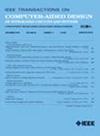SANA-FE:模拟快速探索的高级神经形态架构
IF 2.9
3区 计算机科学
Q2 COMPUTER SCIENCE, HARDWARE & ARCHITECTURE
IEEE Transactions on Computer-Aided Design of Integrated Circuits and Systems
Pub Date : 2025-01-31
DOI:10.1109/TCAD.2025.3537971
引用次数: 0
摘要
神经形态计算关注的是受大脑启发设计计算机架构,最近的工作重点是高效执行大型峰值神经网络(snn)的平台。未来的设计有望通过结合新功能(如新兴的神经形态设备和模拟计算)来提高其能力和性能。然而,缺乏高级性能评估工具来评估这些特性在体系结构级别的影响,评估体系结构权衡,并帮助协同设计和设计空间探索。现有的神经形态模拟器要么不考虑硬件性能,要么只模拟抽象的SNN动态,要么针对单一的特定架构。在这项工作中,我们提出了SANA-FE,一种新的模拟器,可以快速准确地估计不同的基于snn的设计的性能和能源效率。我们的模拟器使用通用和可配置的架构描述格式,可以指定广泛的神经形态设计。使用这样的体系结构描述,SANA-FE在以抽象时间步粒度执行给定的峰值应用程序时模拟系统活动,并使用活动计数和每个活动性能指标来估计每个时间步的能量和延迟。我们进一步展示了一种校准方法,并将其应用于英特尔Loihi平台的建模性能。结果表明,我们的模拟器可以在三个实际应用中预测Loihi的能量和延迟,分别在12%和25%之内。我们进一步模拟了IBM的TrueNorth架构,模拟随机网络的速度比现有的基于离散事件的TrueNorth模拟器快20倍。最后,我们通过优化两个应用程序的Loihi基线架构来展示SANA-FE的设计空间探索能力,减少了21%的运行时间,同时仅增加了2%的动态能源使用。本文章由计算机程序翻译,如有差异,请以英文原文为准。
SANA-FE: Simulating Advanced Neuromorphic Architectures for Fast Exploration
Neuromorphic computing is concerned with designing computer architectures inspired by the brain, with recent work focusing on platforms to efficiently execute large spiking neural networks (SNNs). Future designs are expected to improve their capabilities and performance by incorporating novel features, such as emerging neuromorphic devices and analog computation. There is, however, a lack of high-level performance estimation tools to evaluate the impact of such features at the architectural level, to evaluate architectural tradeoffs, and to aid with co-design and design-space exploration. Existing neuromorphic simulators either do not consider hardware performance, only model abstract SNN dynamics or are targeted to a single specific architecture. In this work, we propose SANA-FE, a novel simulator that can rapidly and accurately estimate performance and energy efficiency of different SNN-based designs. Our simulator uses a general and configurable architecture description format that can specify a wide range of neuromorphic designs. Using such an architecture description, SANA-FE simulates system activity when executing a given spiking application at an abstract time-step granularity, and it uses activity counts and per-activity performance metrics to estimate energy and latency for each time-step. We further show a calibration methodology and apply it to model performance of Intel’s Loihi platform. Results demonstrate that our simulator can predict Loihi’s energy and latency for three real-world applications, within 12% and 25%, respectively. We further model IBM’s TrueNorth architecture, simulating a random network over $20\times $ faster than existing discrete-event-based TrueNorth simulators. Finally, we demonstrate SANA-FE’s design-space exploration capabilities by optimizing a Loihi baseline architecture for two application, reducing run-time by 21% while increasing dynamic energy usage by only 2%.
求助全文
通过发布文献求助,成功后即可免费获取论文全文。
去求助
来源期刊
CiteScore
5.60
自引率
13.80%
发文量
500
审稿时长
7 months
期刊介绍:
The purpose of this Transactions is to publish papers of interest to individuals in the area of computer-aided design of integrated circuits and systems composed of analog, digital, mixed-signal, optical, or microwave components. The aids include methods, models, algorithms, and man-machine interfaces for system-level, physical and logical design including: planning, synthesis, partitioning, modeling, simulation, layout, verification, testing, hardware-software co-design and documentation of integrated circuit and system designs of all complexities. Design tools and techniques for evaluating and designing integrated circuits and systems for metrics such as performance, power, reliability, testability, and security are a focus.

 求助内容:
求助内容: 应助结果提醒方式:
应助结果提醒方式:


